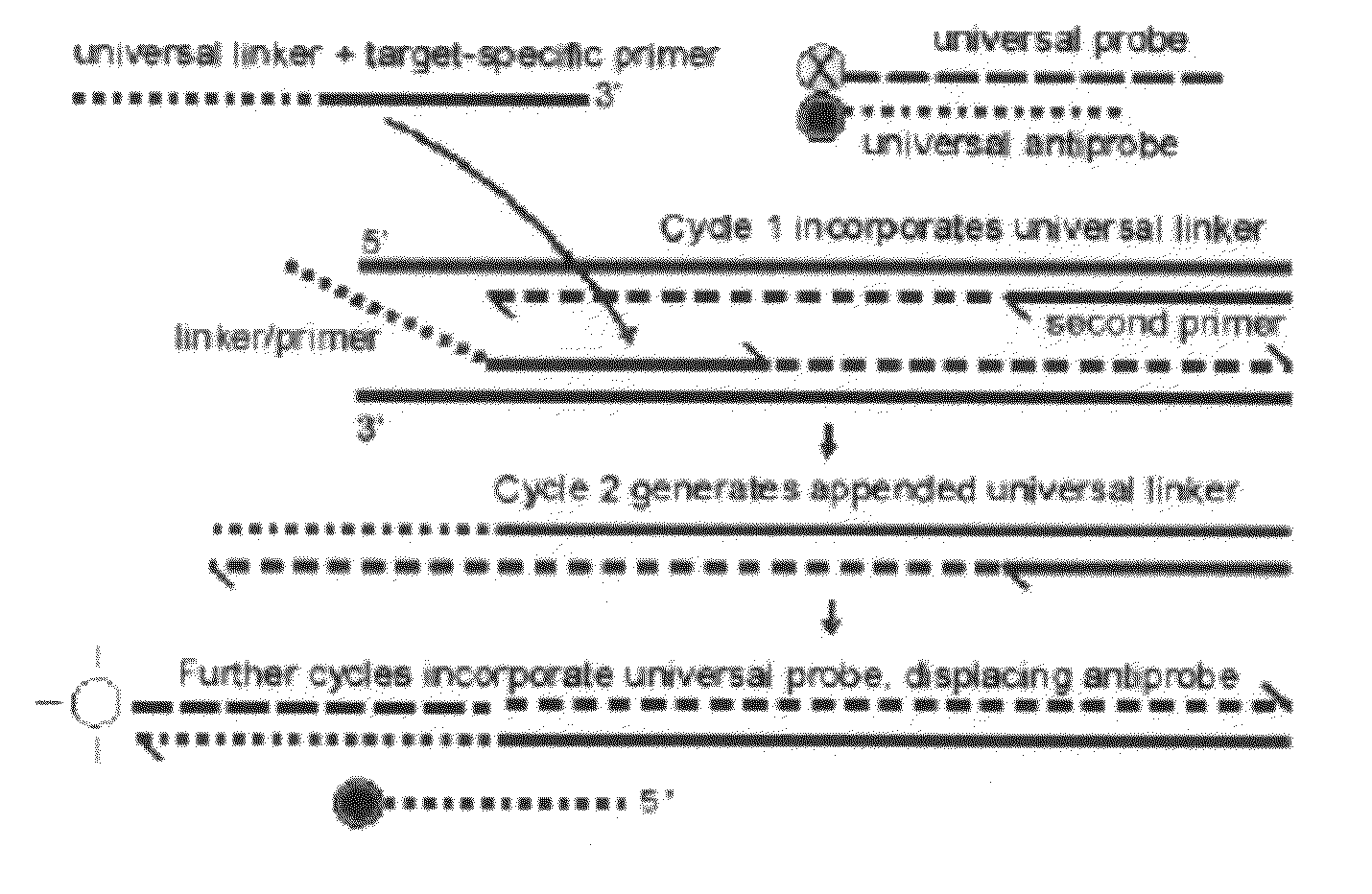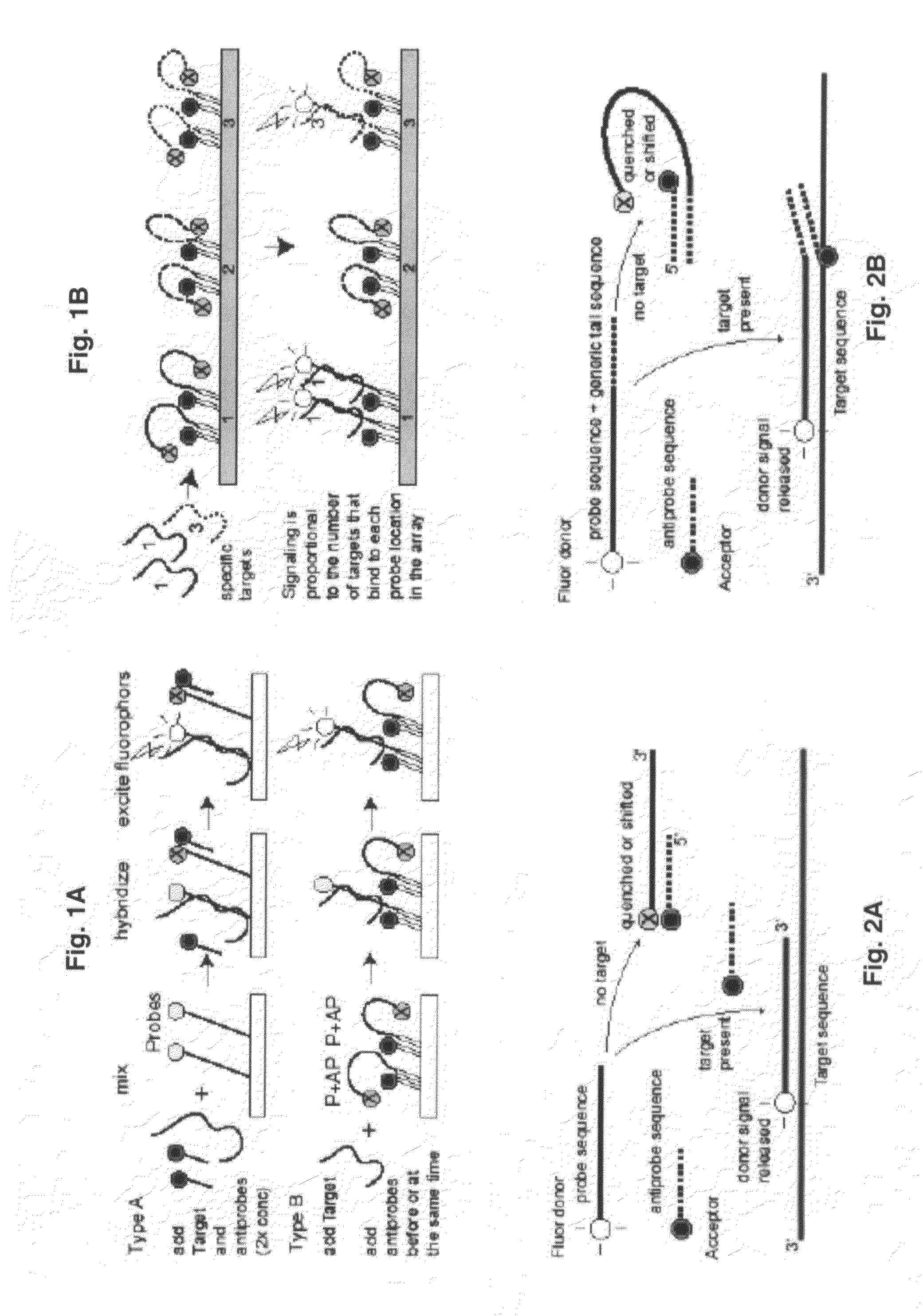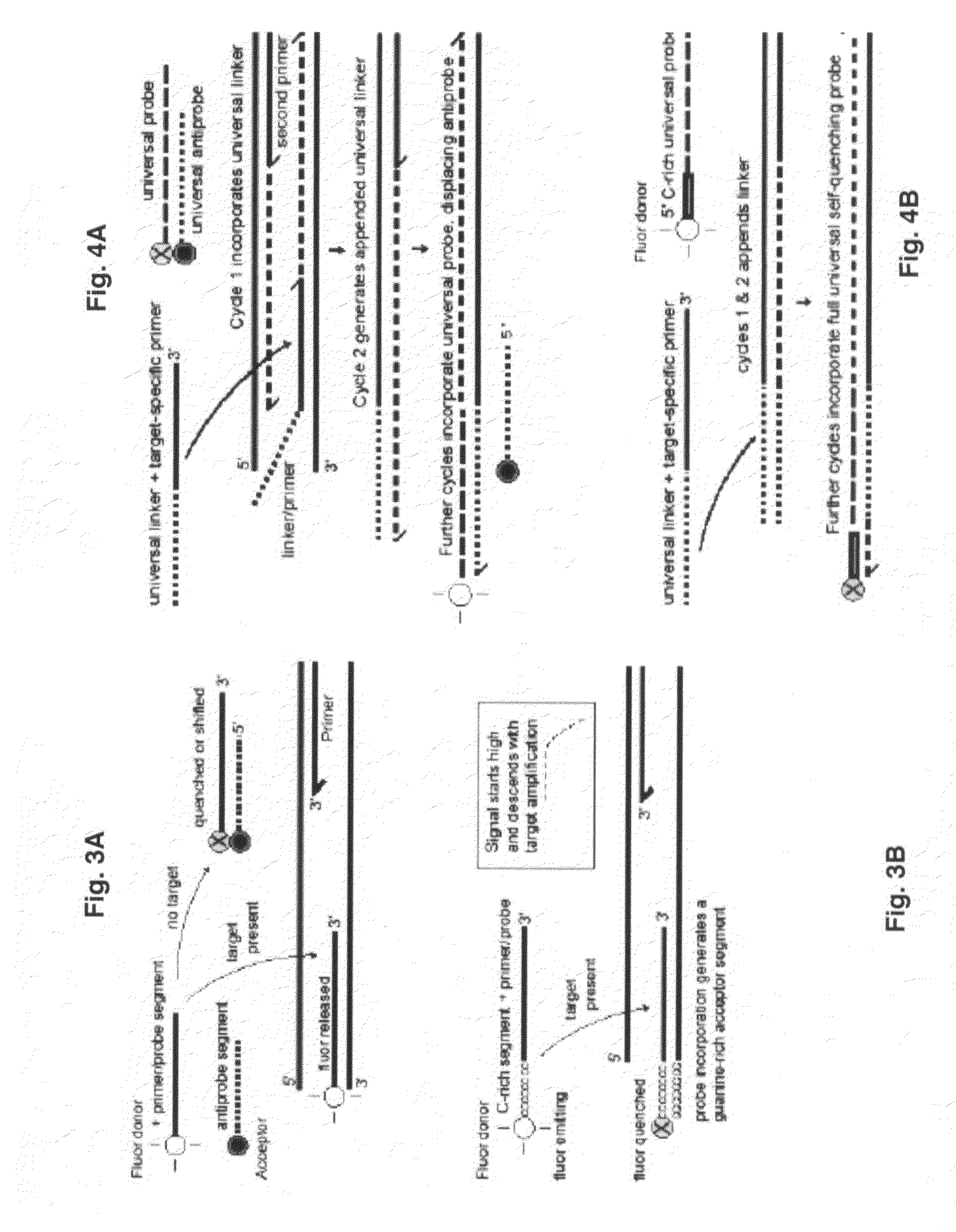Probe-antiprobe compositions and methods for DNA or RNA detection
a technology of antiprobes and compositions, applied in the field of nucleic acid probe technology, can solve the problems of difficult synthesis, difficult wash steps, and careful design, and achieve the effect of avoiding or preventing the detection of closely related, mismatched targets
- Summary
- Abstract
- Description
- Claims
- Application Information
AI Technical Summary
Benefits of technology
Problems solved by technology
Method used
Image
Examples
example 1
Array Detection of DDS Probes with Shorter Antiprobes
This example demonstrates that target-specific DDS probes and antiprobes can be applied and detected on a microarray platform with an array scanner. FIG. 7A shows detection of hand-printed samples in three conditions: the probe alone; the probe plus a matching quencher antiprobe; and the probe, the antiprobe and the target mixed together. The probe is complementary to a 26 base long segment of gene Rv3877 of M. tuberculosis (MTB). It has FAM fluorescent labeling on the 5′ end, it comprises SEQ ID NO: 29 (5′ TCA GGA ACC GCC AAT CAG CCG ATC CGG CTC GGC GTG CAT GTC) which comprises that target segment and a twelve base segment at the 3′ to bind a target-independent antiprobe (for other experiments). The antiprobe employed for this experiment is complementary to nine target-specific bases at the 5′ end of the probe, is labeled with the quencher BHQ1 at its 3′ end, and comprises SEQ ID NO: 30 (GGT TCC TGA). This antiprobe will put the ...
example 2
End Point Detection of DDS Probes with a Fluorescent Plate Reader
This example illustrates quantitative detection of a oligonucleotide target representing the Rv3877 gene of M. tuberculosis. Two DDS probe-antiprobe combinations are tested, with two tests employing the same probe of Example 2. In one case, the 5′ fluorescent-labeled probe is combined with a short antiprobe that binds to the 5′ target-specific end —Type A probes / antiprobes. In the other case, the same probe is combined with a short antiprobe that binds to a generic non-target-specific 3′ tail segment at some distance from the labeled end of the probe—Type B probes / antiprobes. One version of these probes again comprises SEQ ID NO 29 which includes a 26 base target-specific segment, while the target-specific antiprobe comprises SEQ ID NO 30, and the generic antiprobe comprises SEQ ID NO 32. The target is again represented by an oligonucleotide comprising SEQ ID NO 31. An alternate version of the probe is also employed th...
example 3
Quantified Target Detection with DDS Probes and a Fluorescent Plate Reader
This example shows the capacity of DDS probes for quantitative detection of target frequency with both Type A and B probes / antiprobes. The bar graph of FIG. 9 depicts the signaling levels read with a fluorescent plate reader for each tube in the experiment, each of which represented a different set of conditions wherein the first bar (gray) of each pair indicates Type A probe / antiprobe, and the second bar (dark) of each pair indicates Type B probe / antiprobe. The probes and targets all comprise a segment of the human Rab9 gene. The same target was used for both probes, but the probes detect slightly different sequences. Type A probe and antiprobe comprise SEQ ID NO 34 and 35, respectively. Type B probe and antiprobe comprise SEQ ID NO 36 and 37, respectively. The common target comprises SEQ ID NO 38. The probes were 5′ labeled with FAM and the antiprobes were 3′ labeled with BHQ1.
The test samples were prepared ...
PUM
| Property | Measurement | Unit |
|---|---|---|
| length | aaaaa | aaaaa |
| volumes | aaaaa | aaaaa |
| temperature | aaaaa | aaaaa |
Abstract
Description
Claims
Application Information
 Login to View More
Login to View More - R&D
- Intellectual Property
- Life Sciences
- Materials
- Tech Scout
- Unparalleled Data Quality
- Higher Quality Content
- 60% Fewer Hallucinations
Browse by: Latest US Patents, China's latest patents, Technical Efficacy Thesaurus, Application Domain, Technology Topic, Popular Technical Reports.
© 2025 PatSnap. All rights reserved.Legal|Privacy policy|Modern Slavery Act Transparency Statement|Sitemap|About US| Contact US: help@patsnap.com



